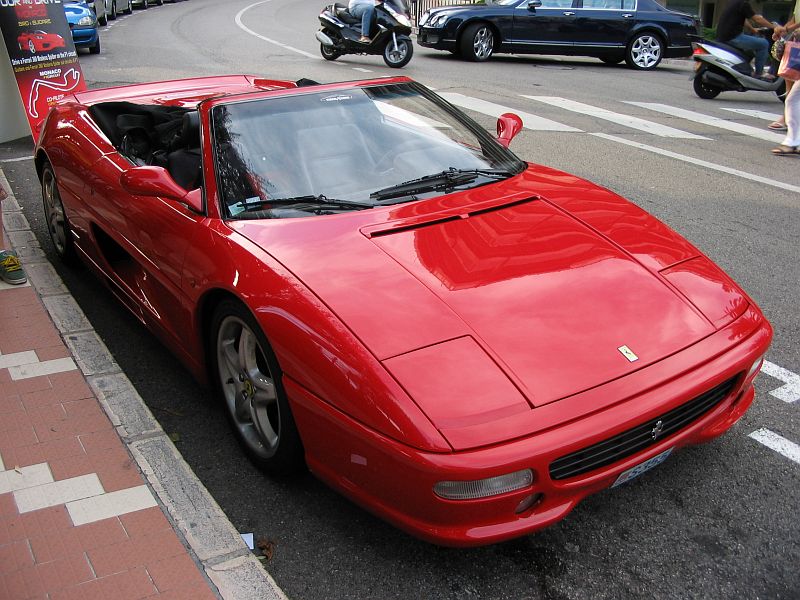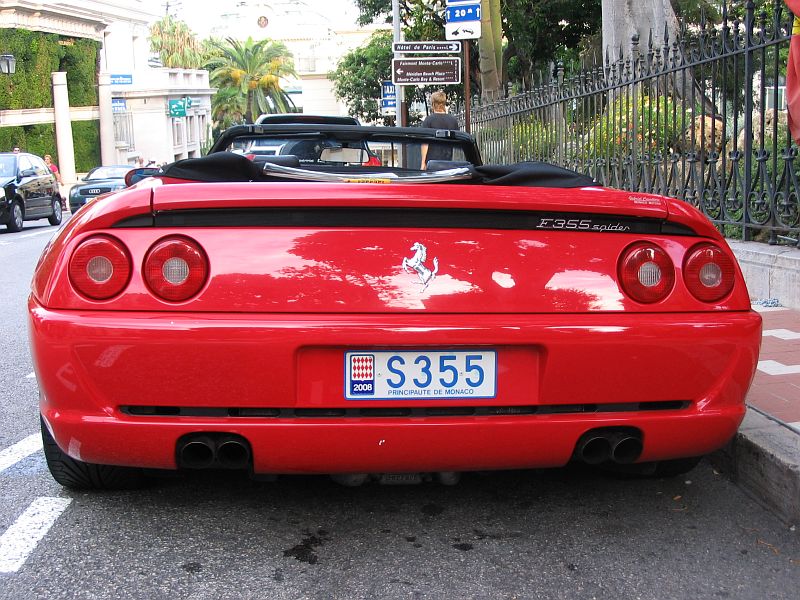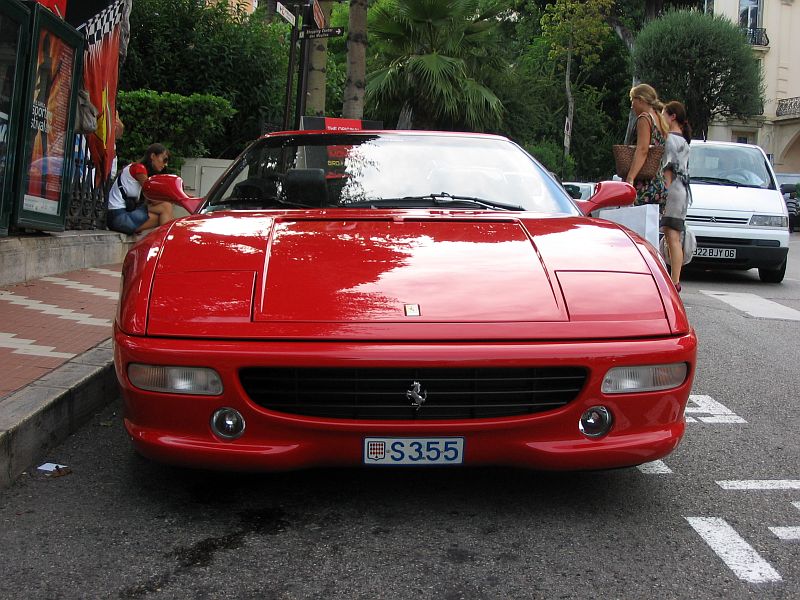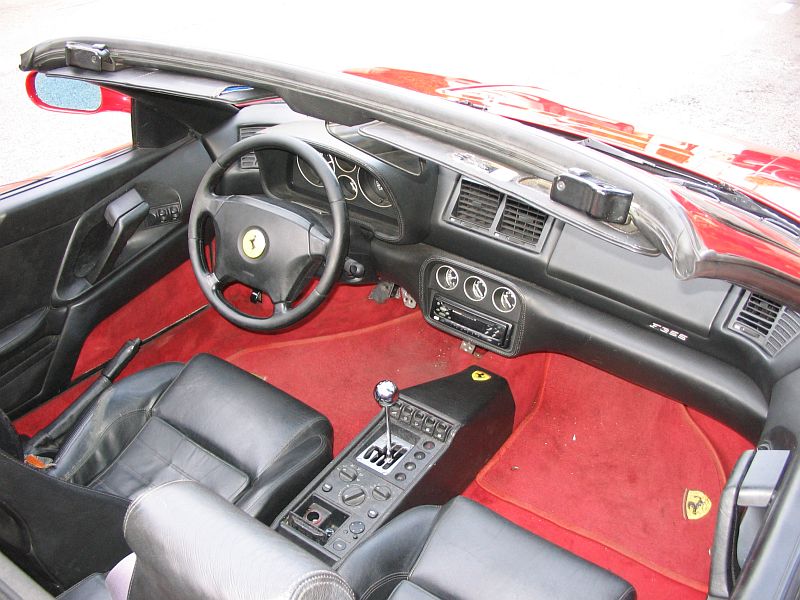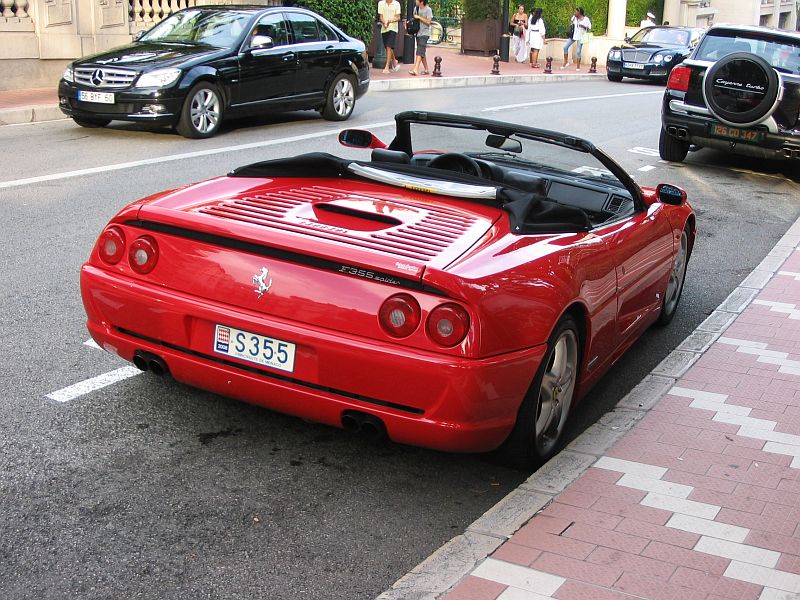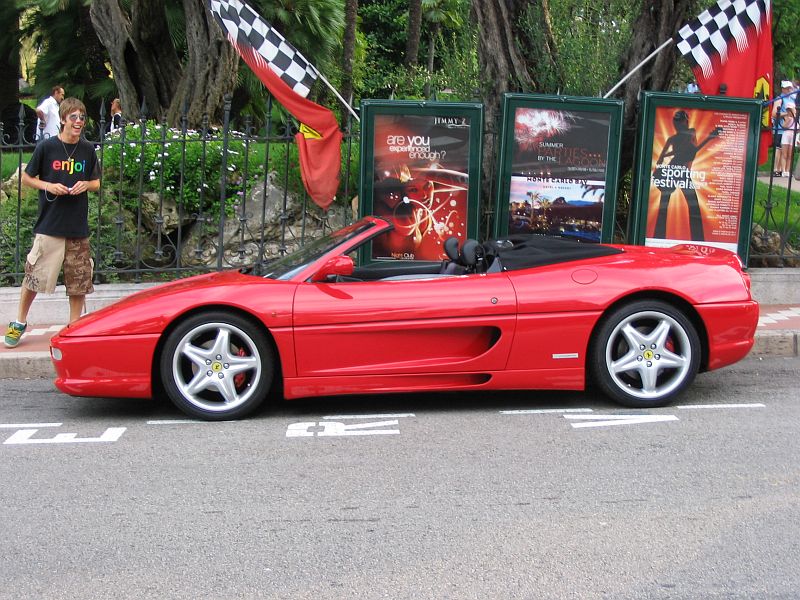Description
The Ferrari F355 Spider was launched in 1995 as the full convertible version of the F355, bringing together the model’s refined performance and design with the exhilaration of open-air driving. It replaced the 348 Spider and featured a fully retractable soft top that folded neatly beneath a hard cover, preserving the car’s clean lines whether the roof was up or down.
Mechanically, the F355 Spider was identical to the Berlinetta and GTS, powered by the 3,495 cc 90-degree V8 with five valves per cylinder — the first such configuration used on a Ferrari road car. Producing 380 horsepower at 8,250 rpm, the engine delivered rapid acceleration, reaching 0 to 100 km/h in around 4.7 seconds and a top speed close to 295 km/h. Its ability to rev beyond 8,000 rpm, combined with a distinctively rich and high-pitched exhaust note, made the Spider especially thrilling with the roof lowered.
Pininfarina’s design work preserved the Berlinetta’s flowing aerodynamic profile, adapting it to accommodate the folding roof without compromising proportions or structural integrity. Reinforcements to the chassis maintained rigidity, while aerodynamic features such as the flat underbody and rear diffuser — inspired by Ferrari’s Formula One technology — were retained to ensure stability at speed.
Inside, the cabin layout was nearly identical to the coupe, with high-quality leather, a low-slung driving position, and a driver-focused instrument cluster. Buyers could opt for the traditional six-speed gated manual gearbox or, from 1997 onward, the pioneering F1 electrohydraulic paddle-shift transmission, giving the Spider a technological edge in the late 1990s sports car market.
Produced until 1999, the F355 Spider became one of the most popular variants in the range, admired for its combination of beauty, performance, and open-top excitement. Today, it remains highly desirable among collectors for offering the raw, high-revving character of Ferrari’s last truly analog V8 generation, paired with one of the most engaging convertible driving experiences of its era.
